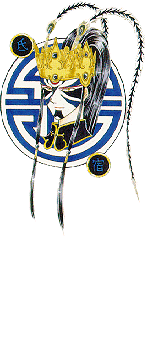

Text taken from a post off the FYML. The post was made by Amy-chan She found the information on this website. Go check it out!
A clatter and crash of drums and gongs sound at a theater of Chinese Opera in Taipei as a young warrior appears on stage in traditional Chinese costume. From his head ascend two tall plumes, tracing in the air each movement and gesture he makes. Some might think these plumes are simply ornamental, but in fact they originate in the battle wear of the Warring States period (475-221 B.C.). Two feathers of a ho bird (a kind of pheasant good at fighting) were inserted into the headwear of warriors of this period to symbolize a bold and warlike spirit, like that of the ho. An outstanding characteristic of traditional Chinese clothing is not only an external expression of elegance, but also an internal symbolism. Each and every piece of traditional clothing communicates a vitality of its own. This combination of external form with internal symbolism is clearly exemplified in the pair of fighting pheasant feathers used in headwear.
